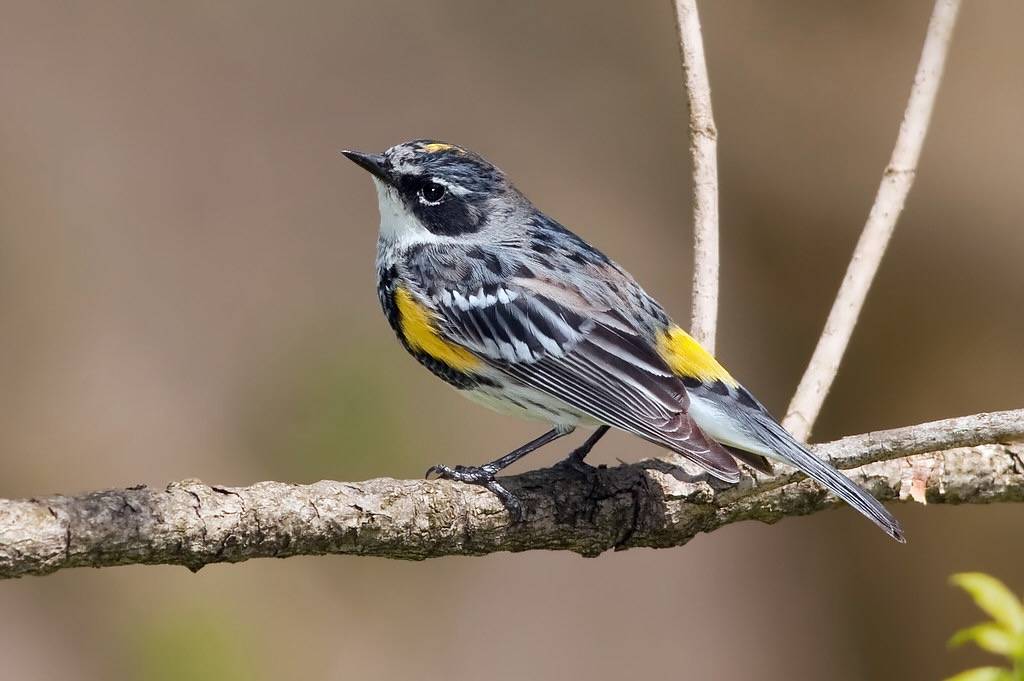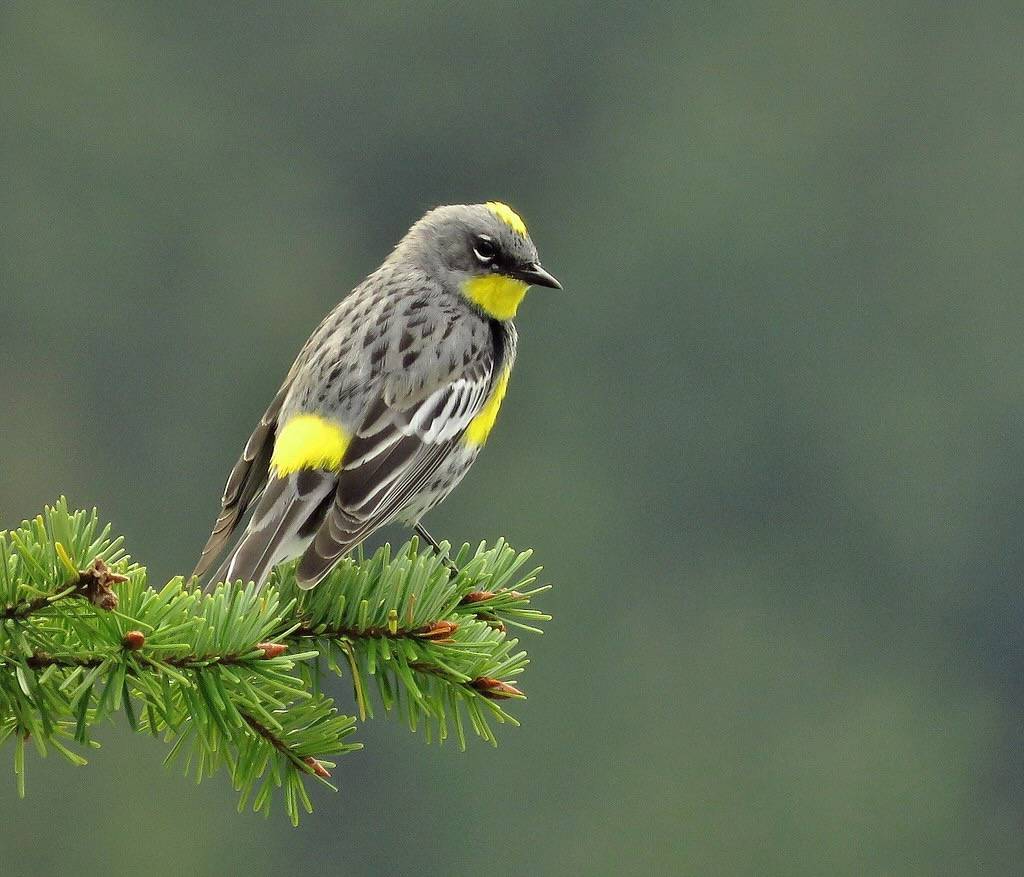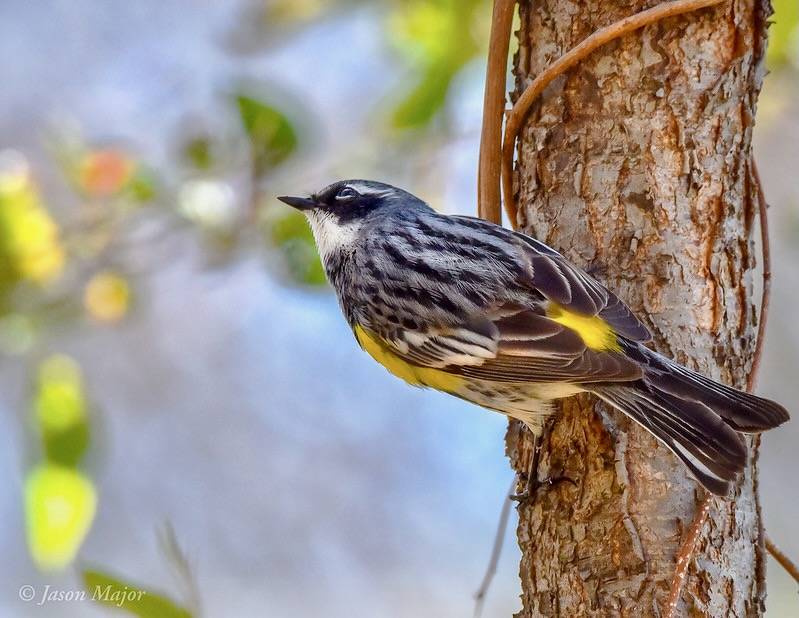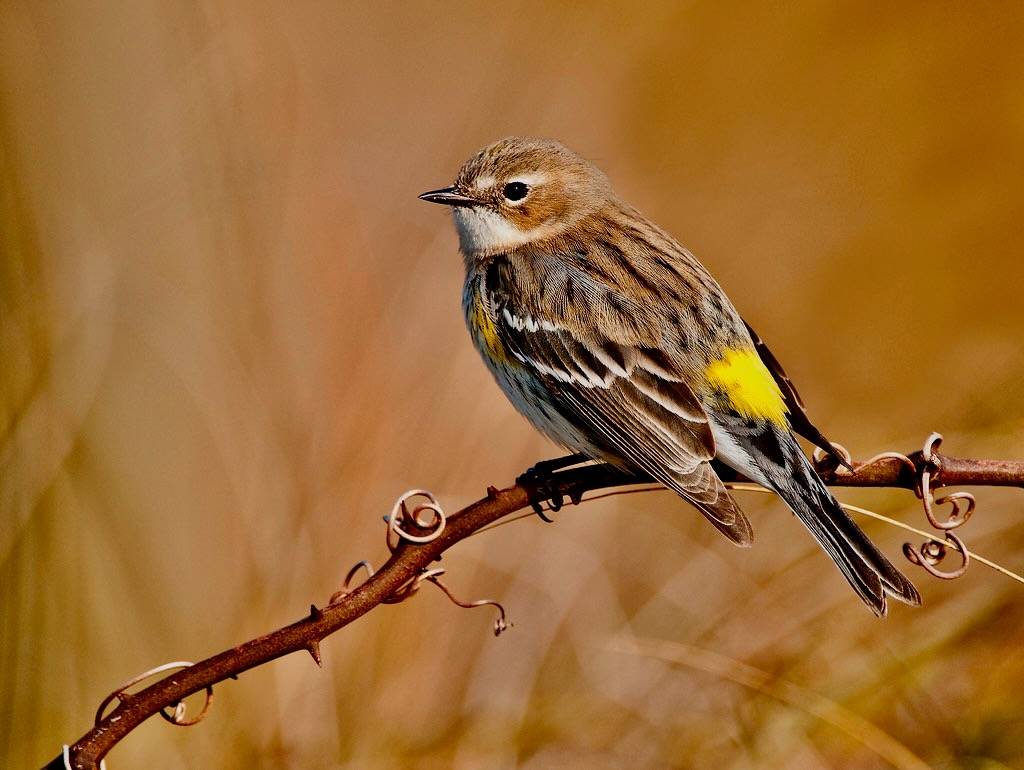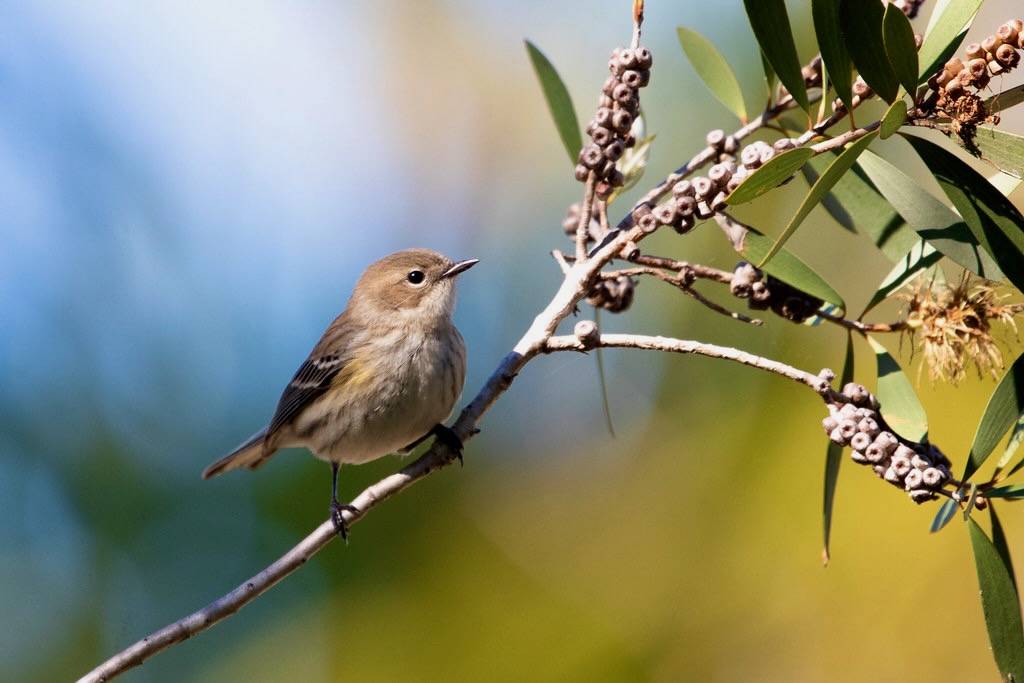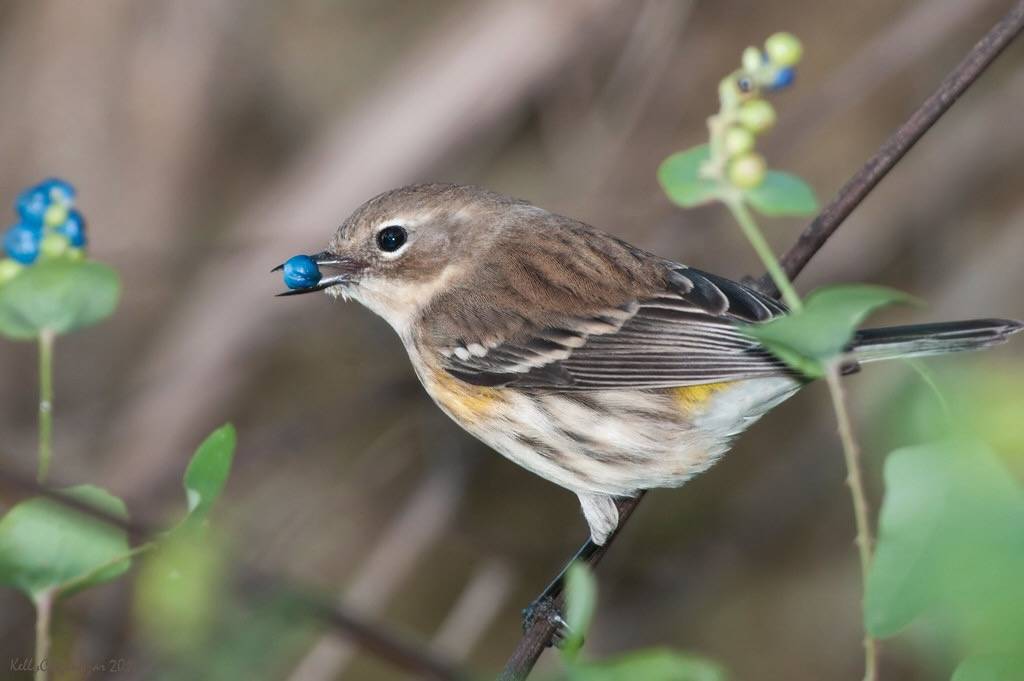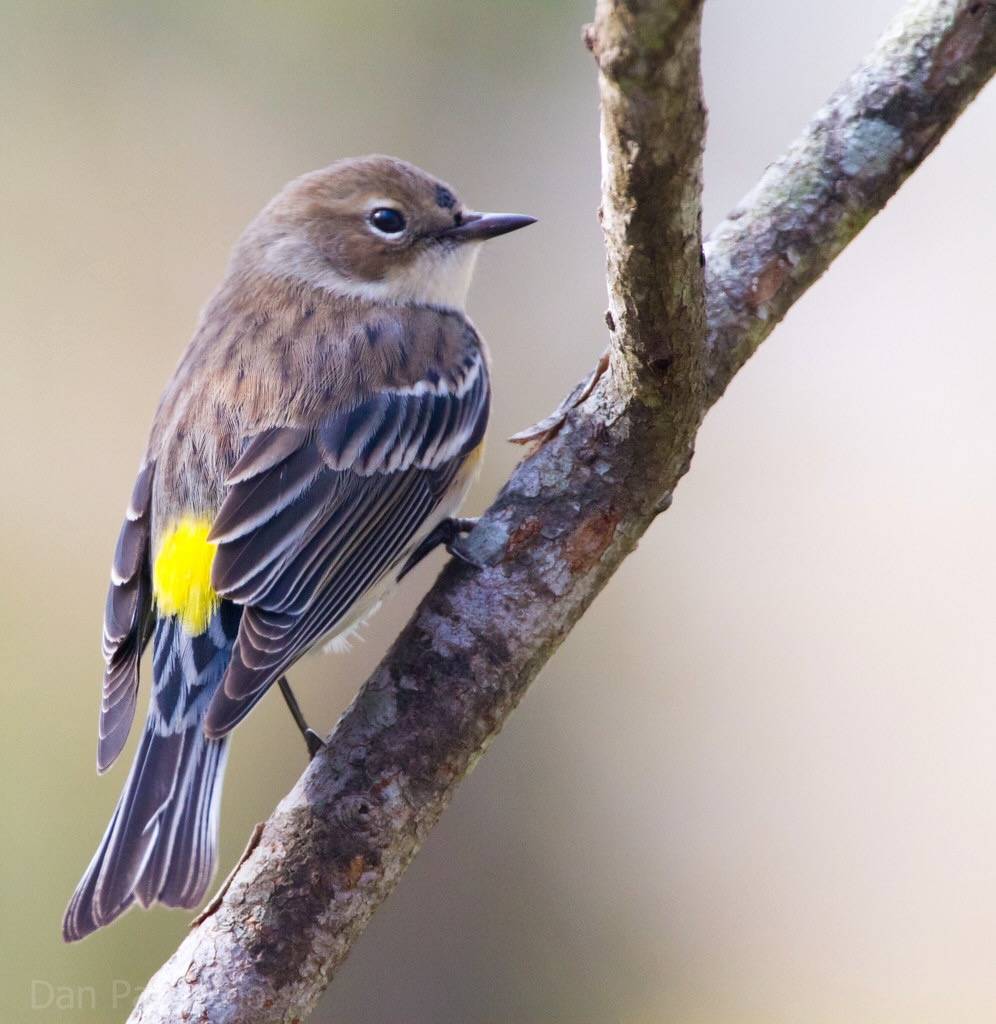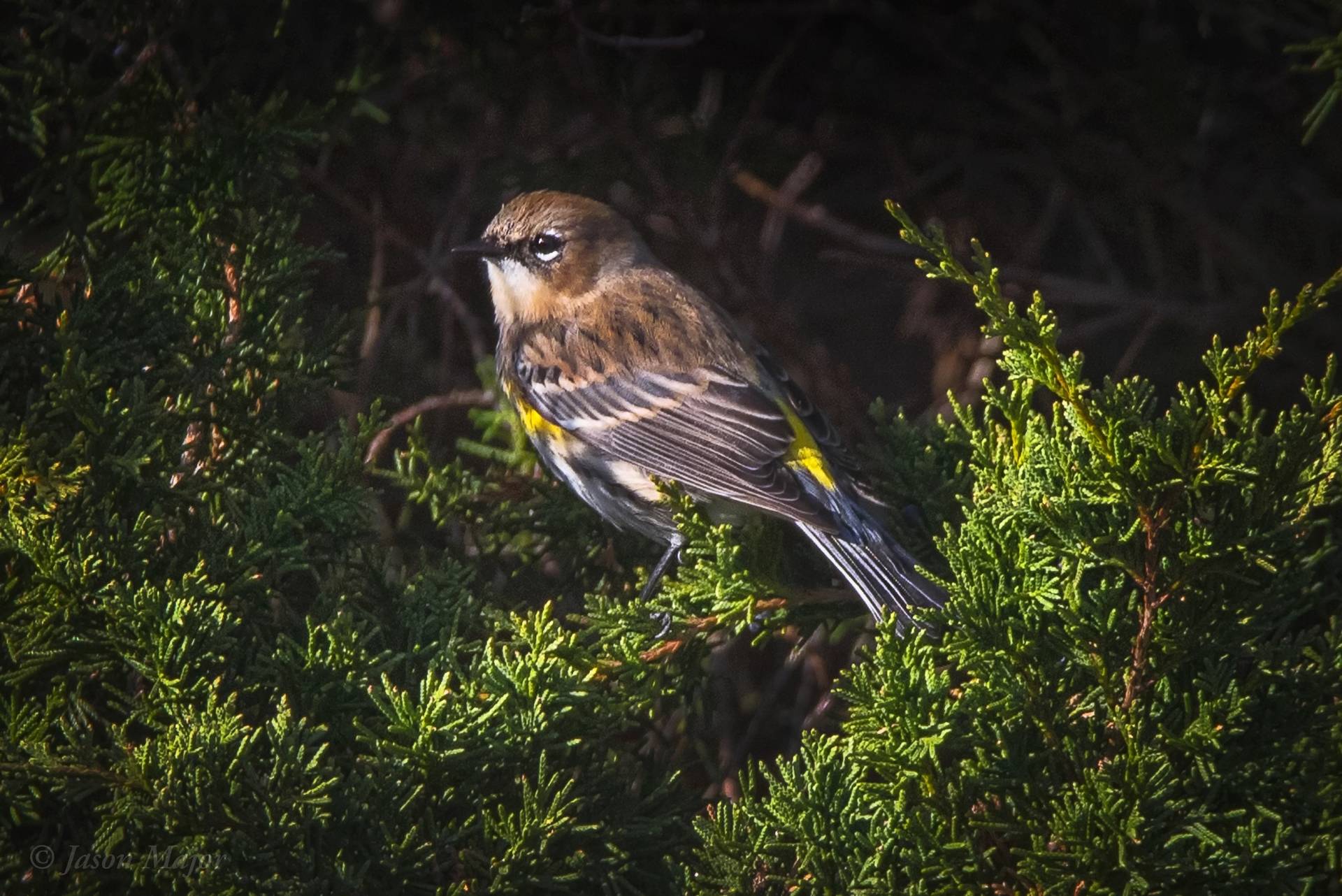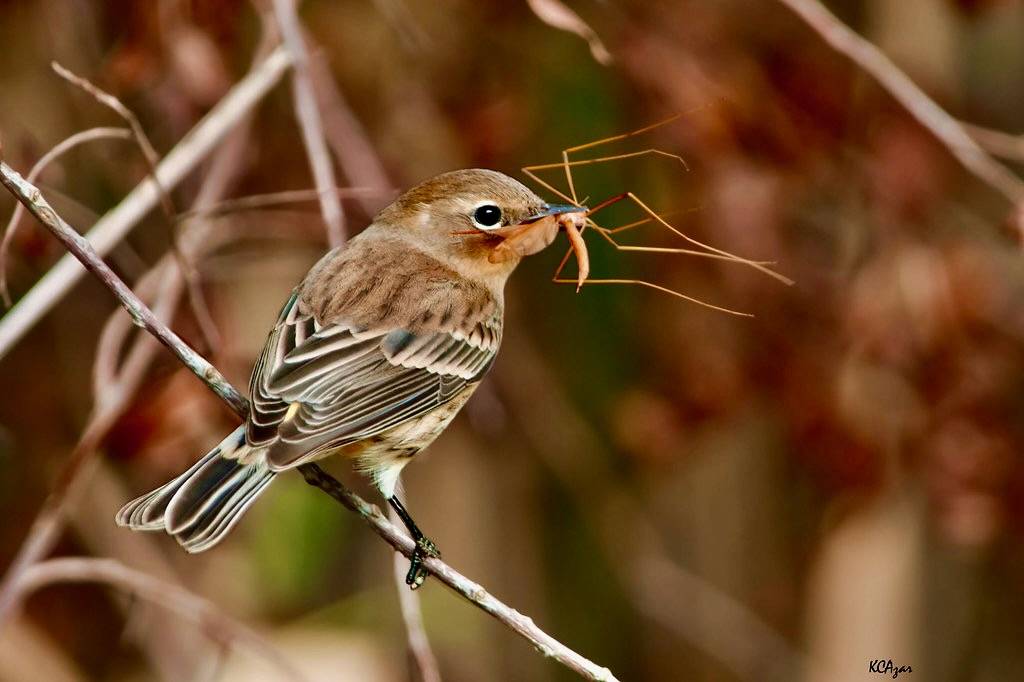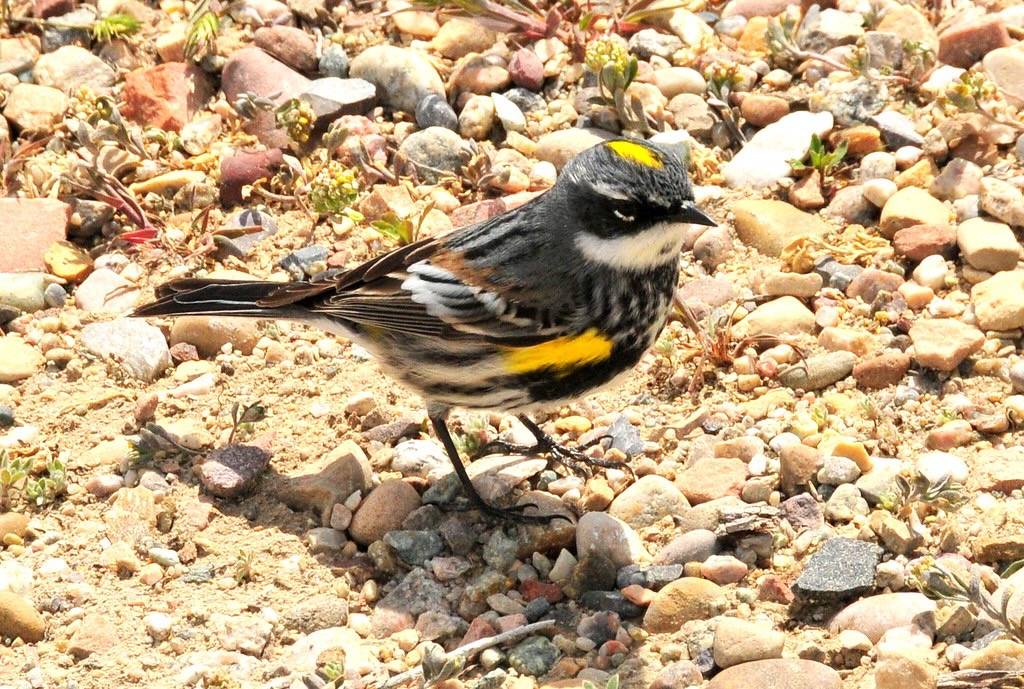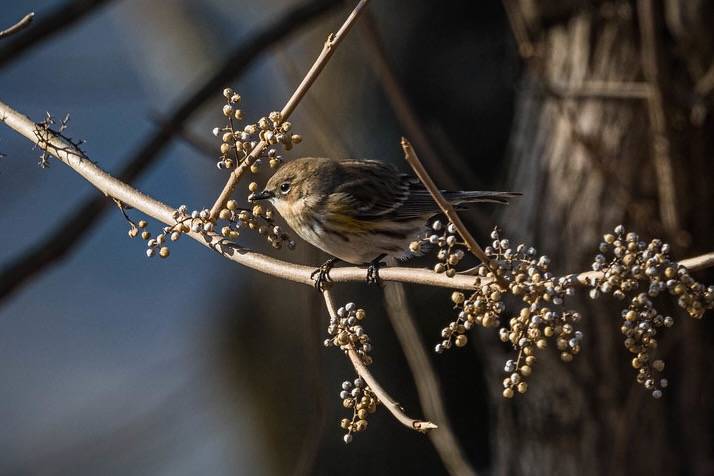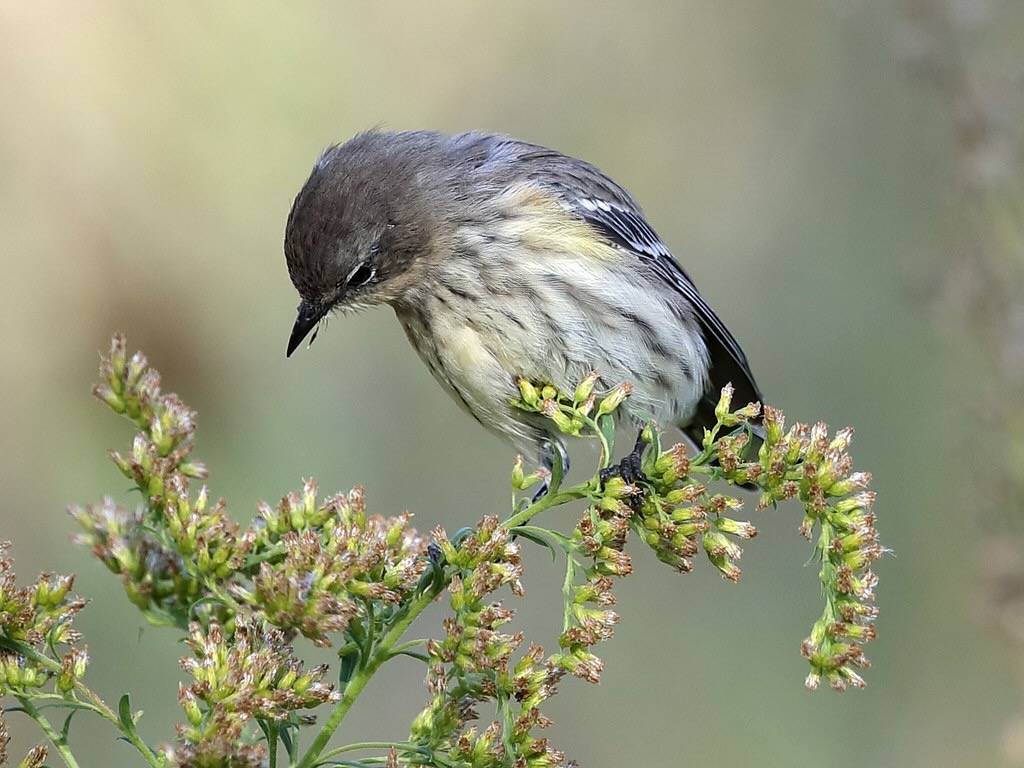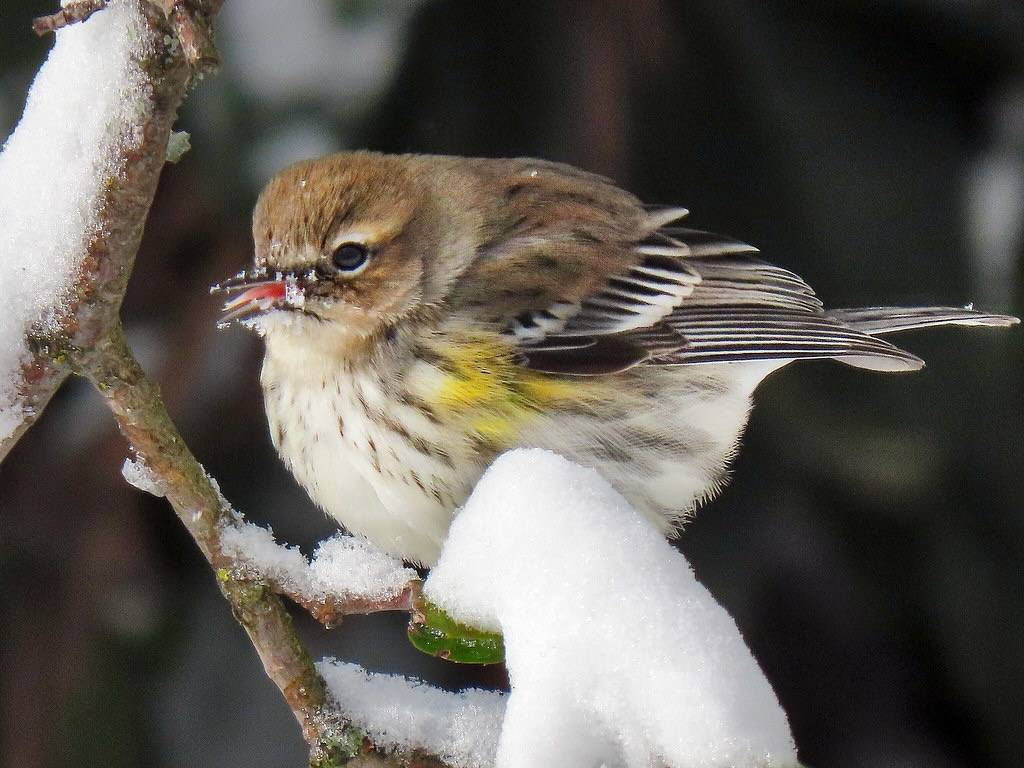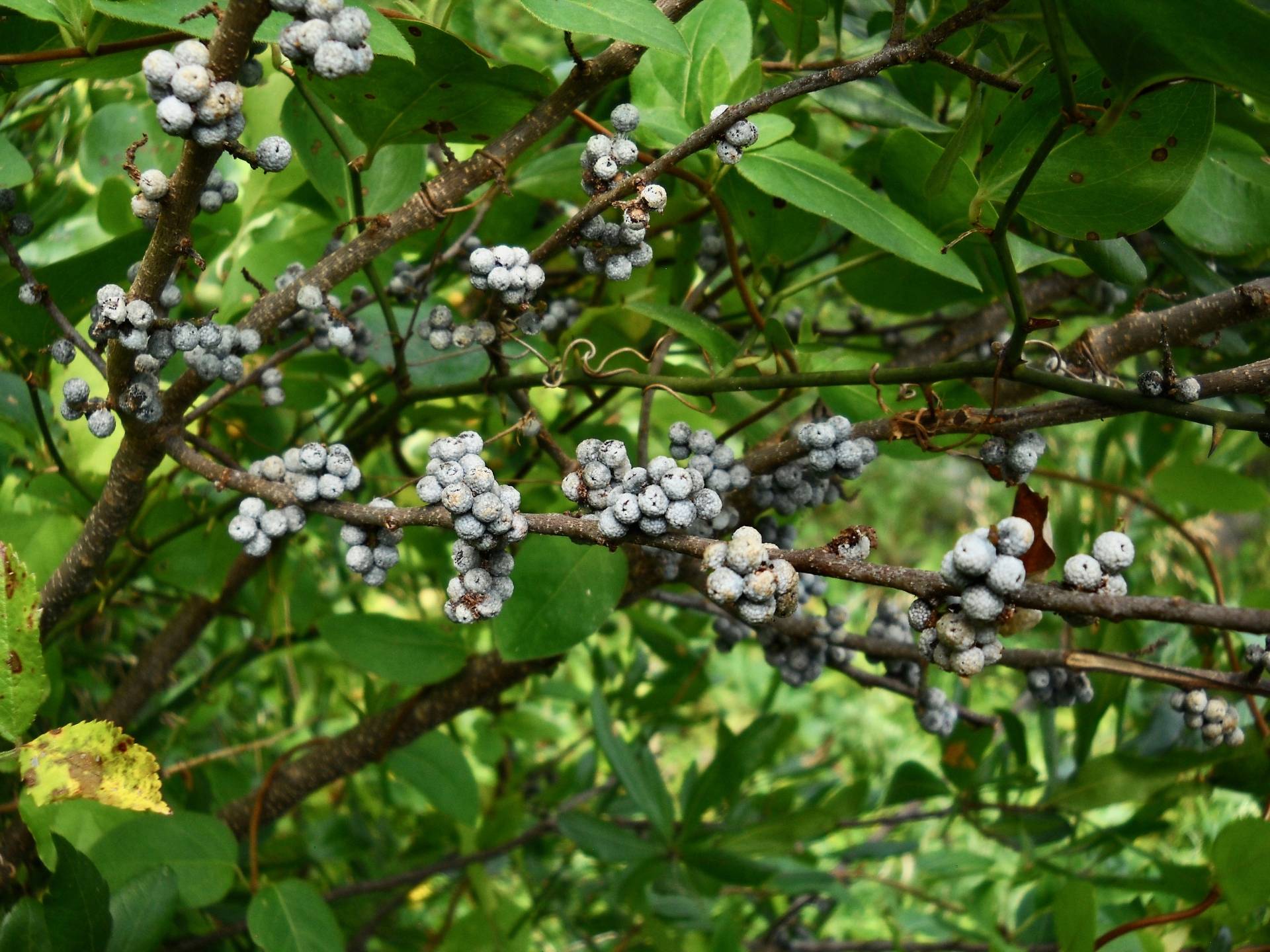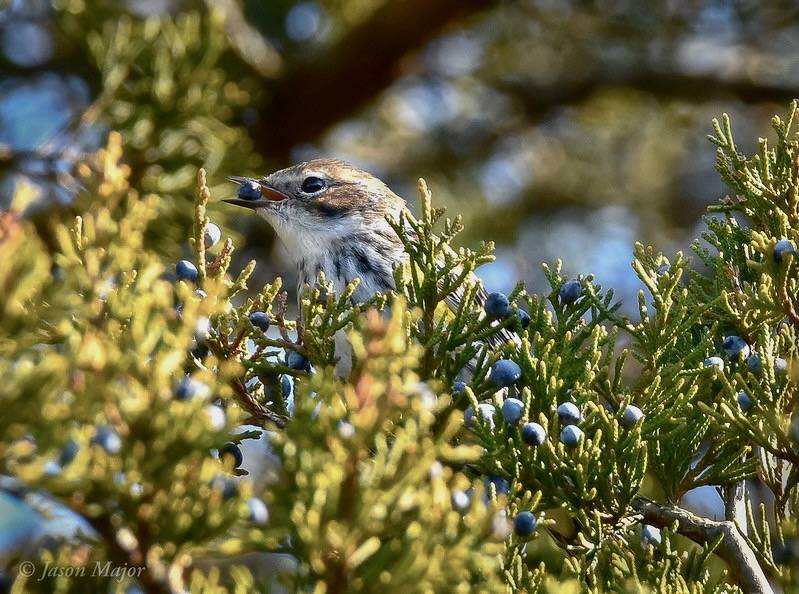Yellow-rumped Warbler
The Yellow-rumped Warbler is a migrant that dependably passes through Salter Grove in numbers during fall migration, even lingering in the park until December in some years. It often forages in small flocks that include other migrant species, darting through shrubby vegetation after insects or small fruits.
The shrubby edges around the parking lot and Audubon Fields are likely places to see small flocks of the "Butter Butts" (nickname used by birdwatchers) during fall migration. Individuals may be seen gleaning the waxy fruits of bayberry shrubs and eastern red cedar trees that dot the park. Yellow-rumped Warblers commonly feed on poison ivy fruits and no doubt play an important role in their dispersal.
The Yellow-rumped Warbler is primarily insectivorous and must migrate south as insect populations decline on its breeding grounds. However, its unique ability to digest the waxy fruits of small bayberry, cedars, junipers, and wax myrtle (southern bayberry) allows it to have a more northerly wintering range than warblers feeding only on fleshy fruits.
The populations that breed across the northern coniferous and mixed forests of North America winter in southern North America and Central America. Populations that breed in Mexico and Guatemala stay in place year round. This wide-ranging species consists of four geographically distinct forms, or subspecies, that used to enjoy species status until they were merged to become the Yellow-rumped Warbler in 1973.
The two subspecies in North America differ in throat color and geographic location. Eastern populations of the Yellow-rumped Warblers have white throats, and prior to 1973, were recognized as the Myrtle Warbler. Western individuals have yellow throats and were identified as Audubon's Warbler. Because these two forms continue to be geographically distinct with little interbreeding, there have been recent, albeit unsuccessful, proposals to split them into separate species again.
For more information:
https://www.allaboutbirds.org/guide/Yellow-rumped_Warbler
https://www.audubon.org/field-guide/bird/yellow-rumped-warbler
https://en.wikipedia.org/wiki/Yellow-rumped_warbler
https://animaldiversity.org/accounts/Dendroica_coronata/
https://www.birdsbybent.com/////ch31-40/yrumwarb.html

